Origins
The Concept Collection is the product of a research & development process we call Grounded Space. In Grounded Space, we form hybrid teams comprised of staff from social service providers plus InWithForward designers & social scientists.
Phase 1 & 2: Quick Dive & Deep Dive
Together, we leave the office, and spend time in family homes, grocery stores, bakeries, and night colleges — wherever people are — to understand their everyday experiences. We write stories of everybody we meet, and return them in order to check our understanding and dive deeper. But, research isn’t our end game; it’s fodder for sparking change.
Phase 3: Ideate & Make
We use the insights and observations from the research to generate lots of ideas, drawing inspiration from international case studies and academic theories. From the hundreds of ideas that get brainstormed, we whittle the list down, using a set of criteria to help us spot the ideas most likely to respond to the pain points from our research and lead to breakthrough change.
Our focus is on ‘next’ generation practice — versus service improvement. Ideas are then visualized: we imagine what the world might look like if the idea existed, and develop storyboards, dioramas, and materials to help make abstract concepts tangible enough to provoke response. We take our visualized ideas to families and community members to co-design them, adding and subtracting components that might work better.
Phase 4: Prototype
The ideas with the most resonance are taken forward into prototyping. That’s where we run the idea, for real, at a small-scale to test core assumptions and learn what would be required for full implementation. We then document our learning, creating a step-by-step blueprint of the idea, and work to attract funders to move prototypes into start-ups.
Curious what it means to go from a prototype to a start-up? Check out Kudoz and Real Talk, two start-ups which have emerged from this process over the last three years.
Process
Here’s what our Grounded Space journey in the settlement sector, with Options Community Services and North York Community House has looked like so far:
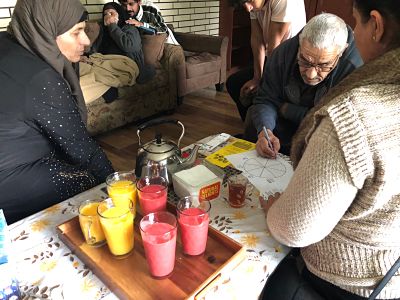
In November, we did ethnographic research. We collected 60 stories of newcomers, trying to understand people’s journey to Canada: their top stressors, values, aspirations, and resources. We identified a grocery store in Surrey, B.C and a few bakeries in North York, Ontario that were hubs of activity, and asked the question: how might we better nourish all the great informal stuff happening?
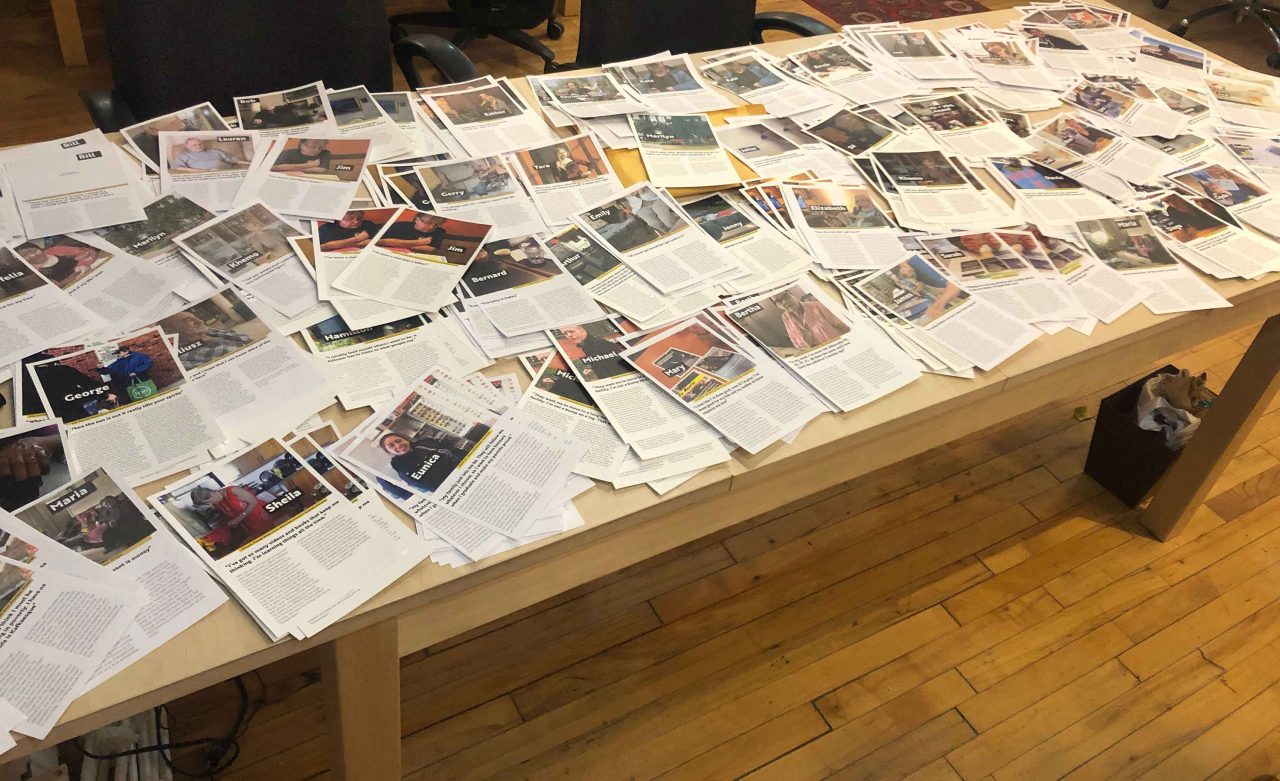
In December, we returned stories and shared early opportunities back with families to gauge their reactions and stimulate more thoughts.
In January, we looked across all of our stories to spot patterns and trends. We identified emotional journeys as a top theme, and developed design research prompts to explore the concept further.
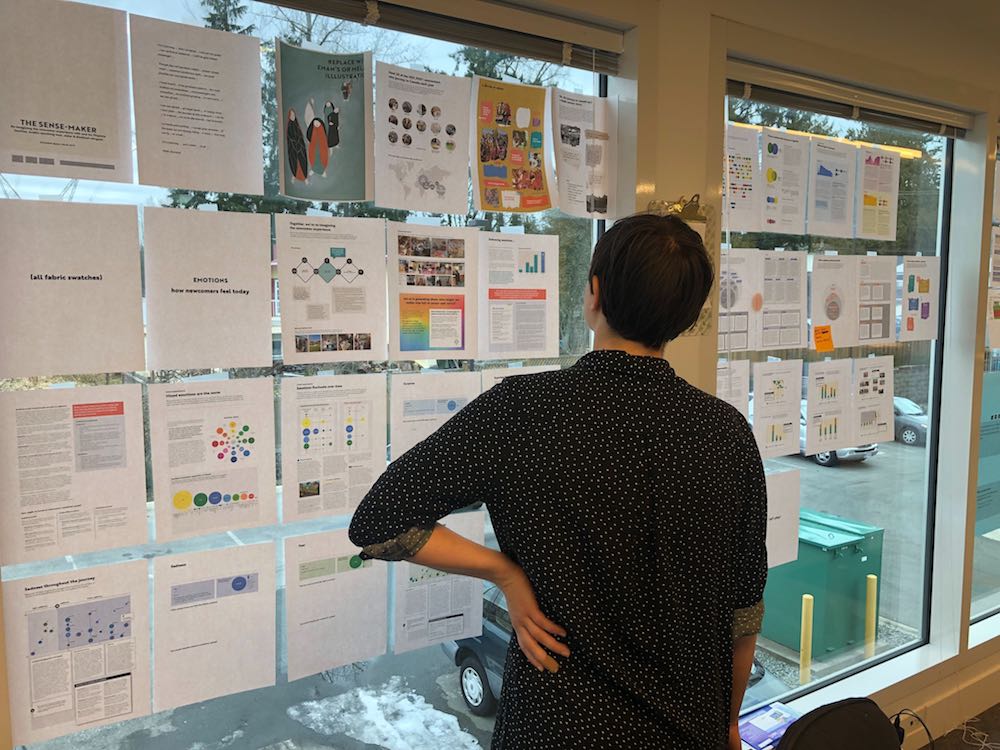
In February, we synthesized our research around emotions and wrote a publication called, The Sense Maker. We named 13 pain points underpinning emotional ambivalence, and created a board game called Elevate to help us generate ideas that could respond.
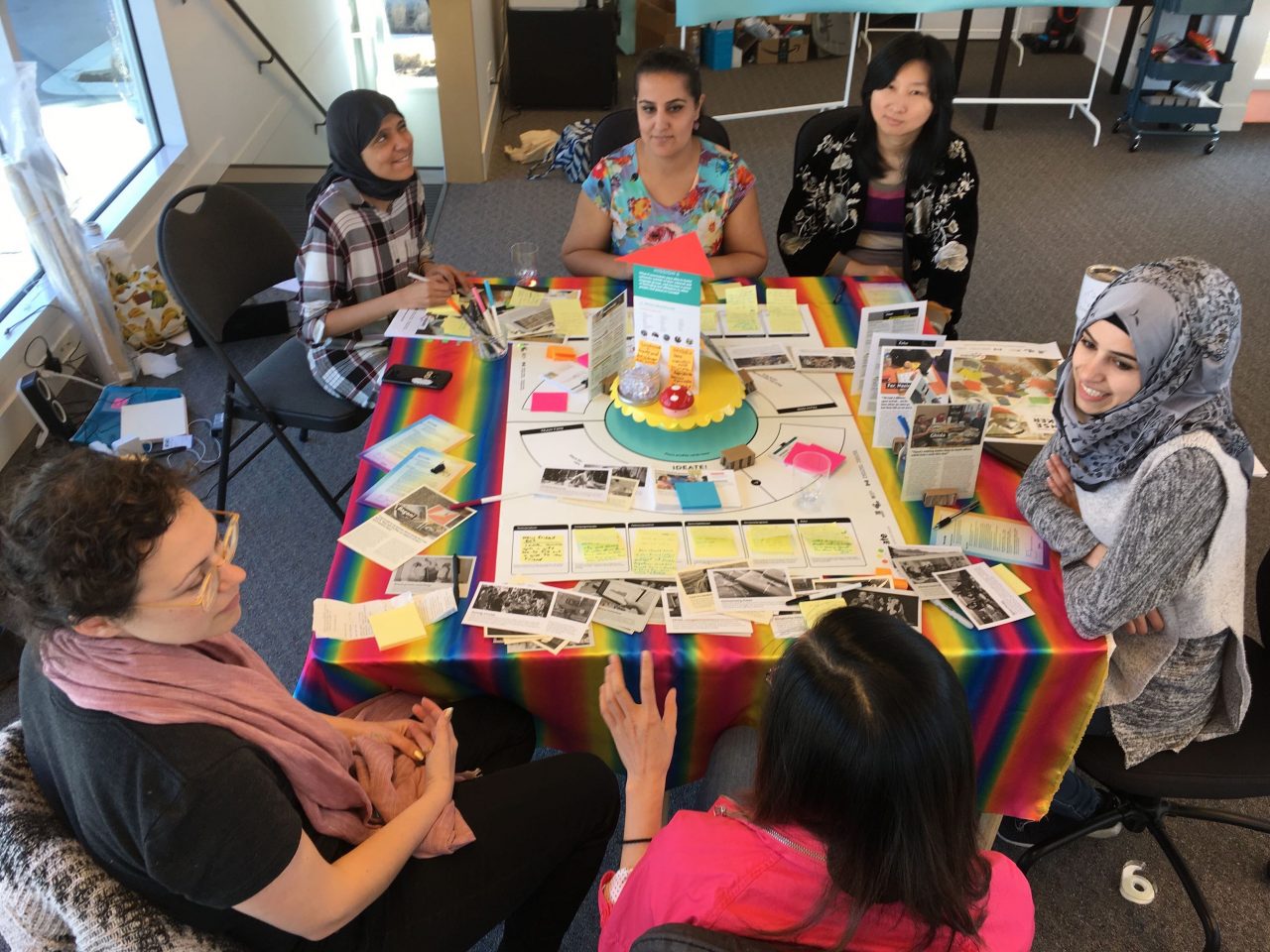
In March and April, we took our board game, Elevate, on the road. We played the game 14 times in Halifax, Surrey, Burnaby, Vancouver and across Toronto. We generated 400 idea nuggets and put them in a database.
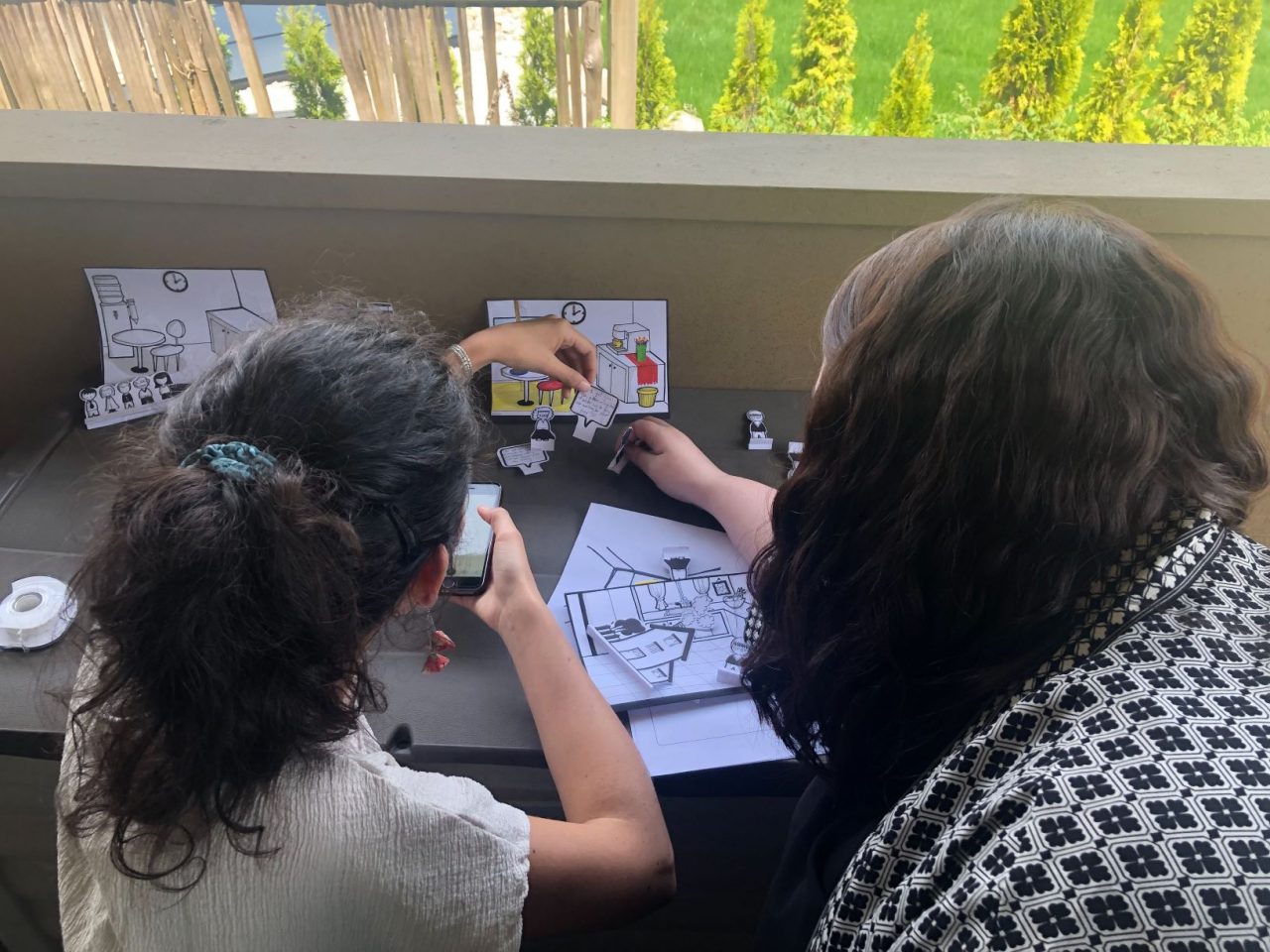
In May, we grouped those 400 ideas into 46 promising starting points, and then applied criteria for what makes a breakthrough idea. We got to six core concepts, and fleshed each of them out, role playing how they might work and creating a draft theory of change to make our assumptions explicit.
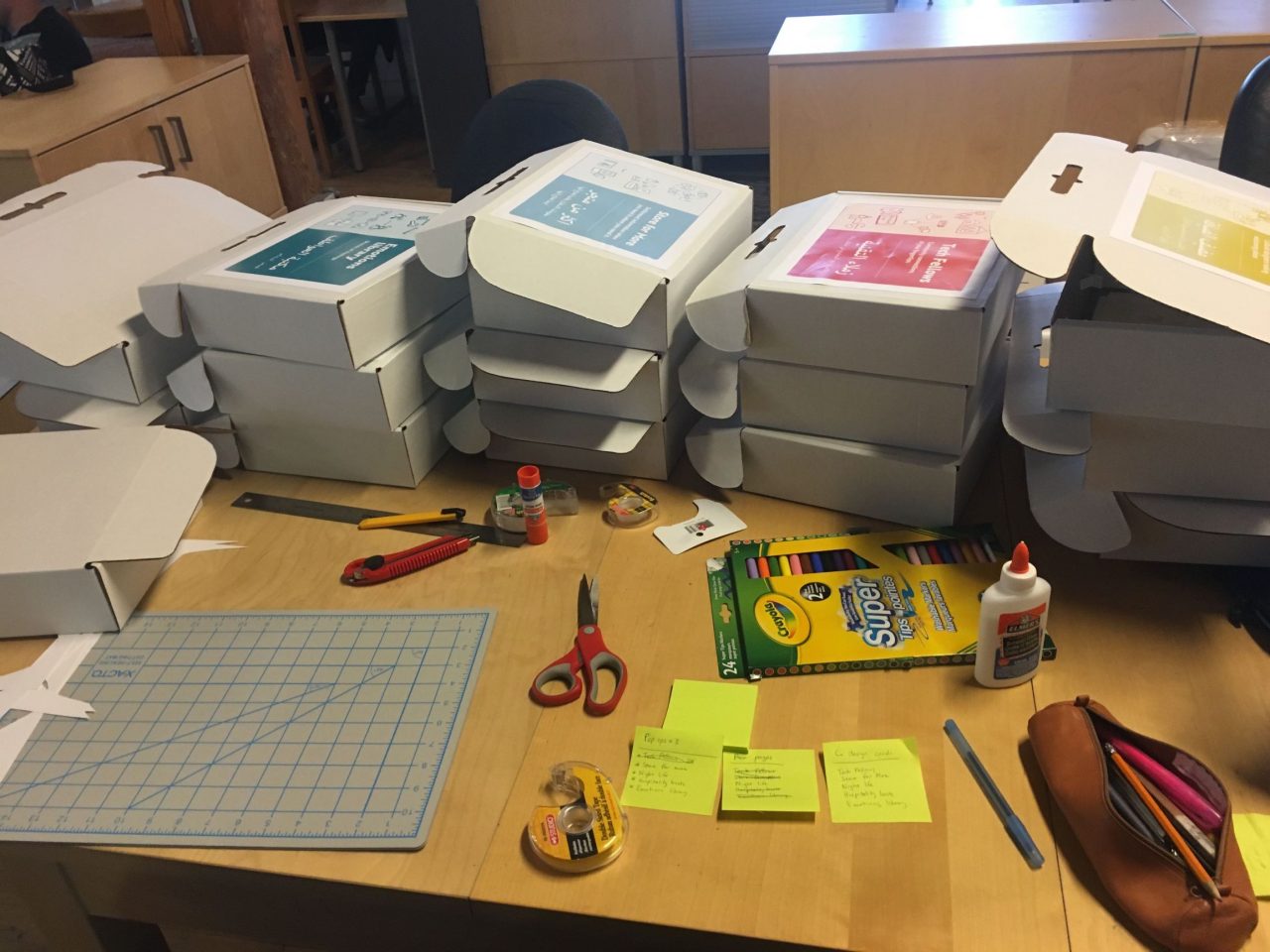
In June, we visualized our five best concepts, making boxes of each concept to bring it to life. Each box contains a storyboard, a pop-up scene, and materials to develop the idea in collaboration with newcomers and community members.
Over July and August, we’ll use our boxes to run co-design sessions in homes and at picnics. A co-design session is where we unpack a concept and add new elements. We’ll also determine which ideas we’ll prototype! We’d love for you to take part …

Design Features
We do not think any one concept is enough to create meaningful change. There is no such thing as a magic bullet solution. That’s why we visualize multiple concepts. We see them as a set that can help to create the conditions for colorful, vibrant lives in communities.
What stitches all of the ideas together are three design features:
- Flipping the sequence. One of the things that contributes to emotional ambivalence in Canada — particularly frustration and disappointment — is the prescribed order of things. First, you have to learn English. Then, you can get a job. Attaining level four English is perceived as a barrier to getting on with and living a rich life in community. Our concepts play with sequence: finding ways to think about English language learning, community engagement and economic development concurrently, rather than separately.
- Changing the narrative. You’re supposed to feel grateful. You’re supposed to be happy. These are some of the messages that newcomers internalize when coming to Canada. A big source of emotional distress is when these socially normed messages conflict with actual, lived experience. It’s hard to reconcile. It feels shameful to be honest. Our concepts try to spread alternative narratives of Canada, and draw on the real life stories of newcomers to set the tone and give voice to the multiplicity of feelings.
- Shifting the setting & roles. Feelings don’t prescribe to a 9-to-5 schedule. Newcomers described floods of emotions late at night, or early in the morning. Because many are living dual lives, and on the time schedule of friends and family back in their home countries, emotional triggers rarely match service times. Plus, many newcomers are used to a rich night life, where social interactions with friends and family buoyed their spirits. Our concepts take place in the spaces newcomers are — on their phones, at grocery stores, in their own homes — at the times that make sense to them. Our ideas also create new roles for newcomers and business owners, directly drawing on the strengths of these communities.
Get involved
Concepts can only have impact if they are taken forward — and we certainly can’t do that alone. We’d love to collaborate …
- Send us your thoughts. Which of these concepts resonates most with you? What else is out there that is similar? What should we learn from?
- Host a co-design session. We’d love to test our five concept boxes with Arabic-speaking newcomers, Filipino families, and interested community members. Know of a family or a group we could come co-design with? We’d love to plan a session.
- Connect us. Got suggestions on important stakeholders (funders, leaders, etc.) we should be meeting with? To pull off any of these ideas, we need to build relationships inside and outside of the settlement sector, getting to know businesses, funders and community groups with shared interests. Broker an introduction!